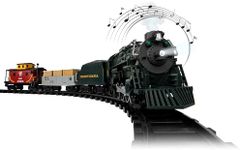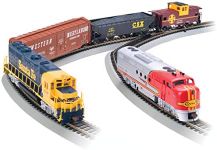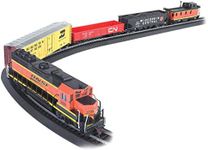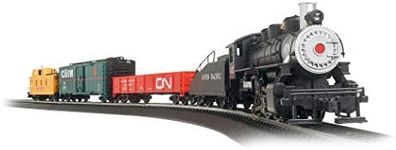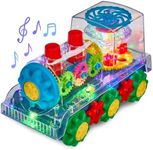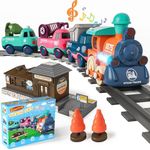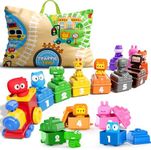Buying Guide for the Best Ho Train Set
When it comes to picking the right HO train set, it's important to consider several key specifications to ensure you get the best fit for your needs. HO train sets are a popular choice for model train enthusiasts due to their balance of detail and size. Understanding the different aspects of these sets will help you make an informed decision and enhance your model railroading experience.Scale and GaugeScale refers to the size of the model in relation to the real train, and gauge is the distance between the rails. HO scale is 1:87, meaning the model is 87 times smaller than the real thing. This scale is popular because it offers a good balance between detail and space requirements. When choosing, consider the space you have available for your layout. If you have limited space, HO scale is a great choice because it allows for detailed models without requiring a large area.
Track TypeThe type of track included in the set can vary. Common types include sectional track, which is easy to assemble and disassemble, and flex track, which allows for more custom layouts. Sectional track is ideal for beginners or those who frequently change their layout, while flex track is better for advanced users who want to create more complex and permanent layouts. Consider your experience level and how you plan to use the track when making your choice.
Power SupplyThe power supply is what powers your train. Most HO train sets come with a basic power pack, but there are also more advanced options like Digital Command Control (DCC). A basic power pack is sufficient for beginners and small layouts, while DCC is better for larger layouts with multiple trains, as it allows for more precise control. Think about the size of your layout and how many trains you want to run simultaneously when choosing a power supply.
Locomotive TypeThe locomotive is the engine that pulls the train. There are various types, including steam, diesel, and electric. Steam locomotives are great for historical or vintage layouts, while diesel and electric are more suited for modern layouts. Consider the era and style of your layout when choosing a locomotive type. Additionally, look at the level of detail and performance features, such as sound and lighting, which can enhance your experience.
Rolling StockRolling stock refers to the cars that the locomotive pulls. This can include passenger cars, freight cars, and specialty cars. The type of rolling stock you choose should match the theme of your layout. For example, if you're modeling a passenger railway, you'll want more passenger cars. If you're modeling a freight line, you'll need various types of freight cars. Think about the story you want your layout to tell and choose rolling stock that fits that narrative.
Layout AccessoriesAccessories can include buildings, scenery, figures, and other details that bring your layout to life. These are important for creating a realistic and engaging scene. When choosing accessories, consider the theme and era of your layout. Start with essential items like stations, bridges, and tunnels, and gradually add more details as you expand your layout. This will help you create a cohesive and visually appealing model railway.
